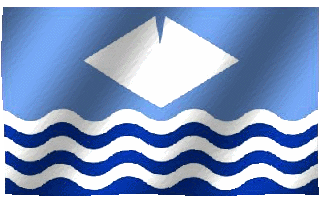
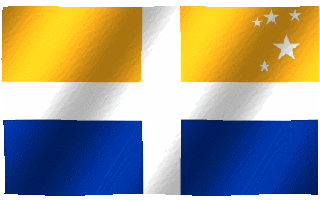
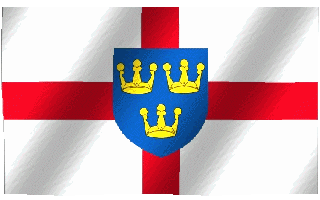
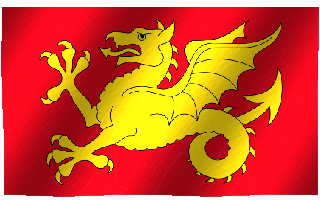
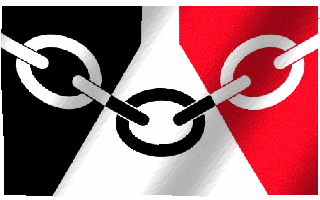
It features a chain to represent the manufacturing heritage of the area whilst the upright triangular shape in the background recalls the iconic glass cones and iron furnaces that featured in the architectural landscape of the area. The red and black colours recall the famous description of the Black Country by Elihu Burrit that it was “black by day and red by night” owing to the smoke and fires of industry.
East Riding of Yorkshire
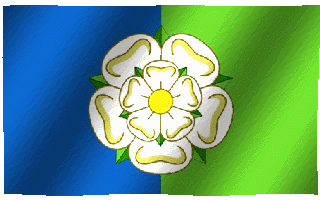
The winning entry in a competition, the flag was the creation of father and son, Trevor and Thomas Appleton from Kirkburn. It was first unfurled on April 18th 2013 at Beverley Minster at a ceremony attended by the Lord-Lieutenant of the East Riding, the Vice Chairman of East Riding of Yorkshire Council and the Chairman of North Yorkshire County Council. The flag features a Yorkshire white rose, displayed in the East Riding style with one sepal at the top, set against a bi-colour of blue at the hoist, representing the sea and the historic maritime activities of the East Riding and green in the fly symbolising the locality’s rich agricultural land. Additionally, the blue hoist colour signifies the East Riding’s connection to the whole of Yorkshire whilst the green is placed towards the fly to represent its position in the east of the county. The East Riding Day is 24th August, this date was chosen in celebration of the East Riding of Yorkshire’s greatest son, William Wilberforce, born on that day in 1759.
North Riding of Yorkshire
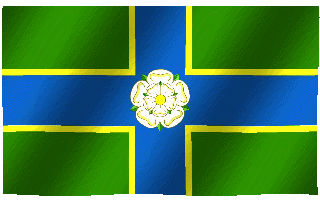
The winning flag in a competition, the flag was the creation of vexillologist Jason Saber and was first unfurled on May 4th 2013 in the hamlet of Holwick, at The Strathmore Arms, the most northerly pub in Yorkshire. The location was specifically chosen to highlight the fact the locality lies within the North Riding, albeit that it is administered by the council in Durham. A cross design had featured in the arms of the former North Riding council so the flag maintains the same general pattern but with more vibrant colours that reflect the locality’s vivid environment and landscape. The yellow edged blue cross recalls the colours (yellow stars on a blue background) of the arms attributed to the local saint, Wilfrid 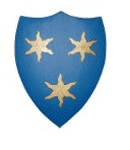 a major figure in the early history of the region. Set against a green field , the three colours in combination allude to the North Riding’s natural features; the green representing the large tracts of the famed North Yorks Moors National Park, while the blue and yellow reflect the North Sea coastline (with its sandy beaches at Saltburn, Runswick Bay and Redcar Beach for example) and such rivers as the Swale, Tees and Esk. The white rose associated with the county for about six hundred years, which had also featured on the arms of the former North Riding Council, completed the arrangement.
a major figure in the early history of the region. Set against a green field , the three colours in combination allude to the North Riding’s natural features; the green representing the large tracts of the famed North Yorks Moors National Park, while the blue and yellow reflect the North Sea coastline (with its sandy beaches at Saltburn, Runswick Bay and Redcar Beach for example) and such rivers as the Swale, Tees and Esk. The white rose associated with the county for about six hundred years, which had also featured on the arms of the former North Riding Council, completed the arrangement.
West Riding of Yorkshire

The flag of the West Riding of Yorkshire was registered on May 23rd 2013. It was created by Michael Faul, a foremost British vexillologist and was the winning entry in a competition. The flag has a considerable history as it was originally designed as a prospective flag for the whole of Yorkshire. The flag features a “rose en soleil” device, first adopted by the Yorkist king,Edward IV upon his accession to the throne after the Battle of Towton. The emblem was fashioned by combining the rose of the House of York with the sun badge used by Richard II and was the punning reference in Shakespeare’s famous lines from Richard III;
“Now is the winter of our discontent
Made glorious summer by this sun of York.”
Wishing to convey something of the Anglo-Scandinavian history of the region, given the enduring Dano-Norwegian presence there in the centuries prior to the Norman invasion, Michael Faul’s design deploys an off-set cross in the Scandinavian style. Thus the Scandinavian cross, in English colours is a neat graphic encapsulation of the local heritage and history.
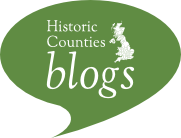
One thought on “Other Registered Flags”
just love this design,hanging in my office in Waiuku New Zealand,as compared to the N&E Ridings